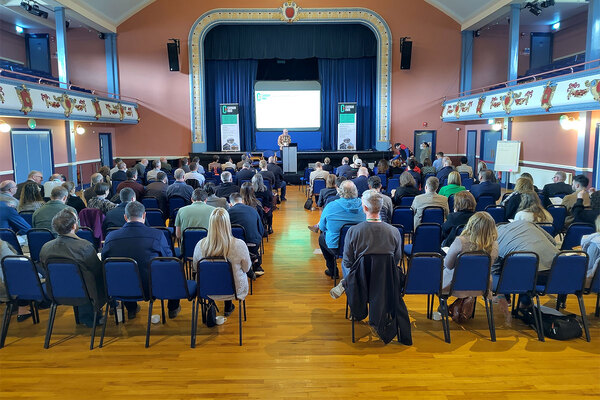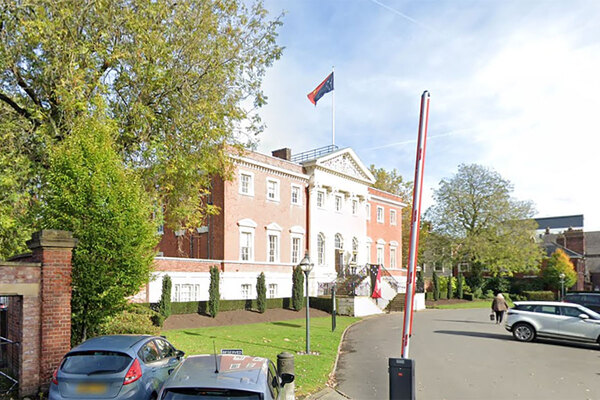Using innovation to meet net zero targets
Innovation and technology could be the key if the social housing sector is to meet its net zero targets. Michael McGowan at repairs and maintenance provider Mears explains why

In association with:
![]()
The scale of the retrofit challenge facing the housing sector today is huge. Reaching net zero by 2050 will involve work on millions of homes – and while the sector has started this journey, it won’t meet its decarbonisation targets at the current rate.
Could innovation and technology help to unlock the pace and scale needed to get the job done? Inside Housing speaks to Michael McGowan, head of carbon reduction solutions at repairs and maintenance provider Mears, to find out.
What role can innovation play in boosting the scale and speed of retrofit programmes?
Within the UK, we have some of the oldest and poorest-performing homes in Europe. We have the technologies to reduce carbon emissions from our homes, but take-up has been slower than needed if we are going to meet our net zero targets in the coming years. Our sector has many examples of successful deployment of decarbonisation technology across the UK – but we are yet to see how we can drive this at scale, and so we need to start doing things differently.
Collaboration will be key, as will a willingness to share learnings and to pass on potentially commercially advantageous findings for the good of the sector as a whole. No one organisation or one person has all the answers, but together, we have a chance to do what we need to do to help secure the future of the planet.
Which aspects of retrofit can be improved by technology, and how?
Without going into specific examples, there have been lots of great examples of pilots, trials and funding incentivisation for innovation around retrofit. The biggest challenge is harnessing that learning and rolling it out at scale. A lot of the technological innovation that we have seen to date has a high price point – with the expectation that scaling up these new technologies will drive down the associated costs.
However, the opportunities to make this a reality often evaporate due to those high initial costs, and because many decision-makers prefer to take the ‘informed follower’ route rather than adopt the mantle of ‘pioneering trailblazer’.
What kinds of technologies hold the most promise?
There are great examples across many retrofit measures, from fabric improvements to low-carbon heating. Often, though, people can be hesitant to embrace these new technologies.
The example I always use is heat pumps. One of the most common conversations I have had over the past decade is around replacing gas boilers. When I worked on the client side, I suggested that we’d need to start budgeting for heat pumps by 2030. I got a lot of pushback from colleagues at the time, who said: “We installed heat pumps in this area 10 years ago, and we ended up having to rip them all out. They don’t work.”
But technology moves on. If you think back to the first iPhone versus the one in your pocket today, as consumers, we’re willing to accept and embrace all those improvements and developments, and to go on that journey. Heat pump technology has improved over that time, too – and so to make the most of these developments, we need to establish a greater level of confidence among communities and housing providers. Ultimately, this comes down to change – and how we engage positively across project teams and end users about the benefits of such technologies.
What is strategic innovation, and what are its benefits?
I define strategic innovation as a long-term commitment to resolving an existing challenge. It doesn’t have to be purely about technology; customer-focused strategic innovation is something we need to push forward across the sector. We have a huge opportunity to innovate in the way we communicate with customers and with one another. Someone might think they’re delivering innovation by installing a new type of heating – but if the resident doesn’t understand how to use that technology, the benefits will be lost.
Customer-focused innovation can be around the technologies. It can also be about the advice that we are giving to customers. But collaboration between organisations to improve the customer journey can also be innovation. That might be as simple as two different contractors delivering similar retrofit measures in the same area having a conversation about sharing resident engagement materials, or sharing best practice.
What can social landlords do to ensure they remain flexible and adaptable?
I may be biased, but I think the housing sector is one of the most flexible and adaptable sectors around. We are always dealing with change and fresh challenges – whether that’s new legislation, changes to funding and strategic requirements, even political instability. But while I want to celebrate the sector’s good work, it’s also true that we should have got our act together on retrofit years ago.
We’ve known about climate change and decarbonisation for years, but very few organisations have actually invested in their teams. But things are changing. Momentum is building. The opportunity is now, the funding is there, and there is a consensus that this is here to stay.
So the sector is already flexible, but to build the scale and speed this challenge requires, organisations need to invest: in their internal skills, and in relationships with learning establishments, their service providers and their supply chains. Flexibility and adaptability are about building and nurturing relationships across the sector.
What are the potential pitfalls social landlords can face in using technology to increase the scale and speed of retrofits?
The first potential pitfall is the scalability of a given technological solution. The second is the cost of its adoption. For me, the key here is trust in the technologies being proposed – both from clients and among the residents who are the end users.
I think that at the moment, because a lot of these technologies are still emerging, a lack of trust can put the brakes on achieving the scale that we actually need.
We can overcome this with good information and education from all sides of the table.
What would you recommend to landlords that are looking to start scaling and speeding up their retrofit programmes?
Understand your housing portfolios. Gather quality data on your stock – data that can be used to lead decision-making, and turned into information that can be used rather than just stored on IT systems.
Understand your customers, so you can see how much flexibility we need to accommodate their needs. This could be technological, such as ensuring adequate ventilation for the composition of a household, or tailoring resident communications for various languages. Create a culture where knowledge and learning are transferable internally and externally – and don’t be afraid to fail. Failures are how we all learn and improve.
Recent content in association with Mears
Using data intelligence to accelerate retrofits
Robust data and intelligence can inform retrofit decision-making. Steve Osborne, head of business improvement at repairs and maintenance provider Mears, sets out what landlords need to consider
Using innovation to meet net zero targets
Innovation and technology could be the key if the social housing sector is to meet its net zero targets. Michael McGowan at repairs and maintenance provider Mears explains why
It’s vital to take residents with you on the decarbonisation journey. How can landlords do this?
The drive to net zero asks a number of questions about the landlord-tenant relationship. An Inside Housing roundtable, in association with Mears, looks for some answers
What progress has the sector made to plan and prioritise decarbonisation projects?
A survey run by Inside Housing in association with Mears asked the housing sector about its strategies, priorities and challenges when it comes to achieving net zero carbon











